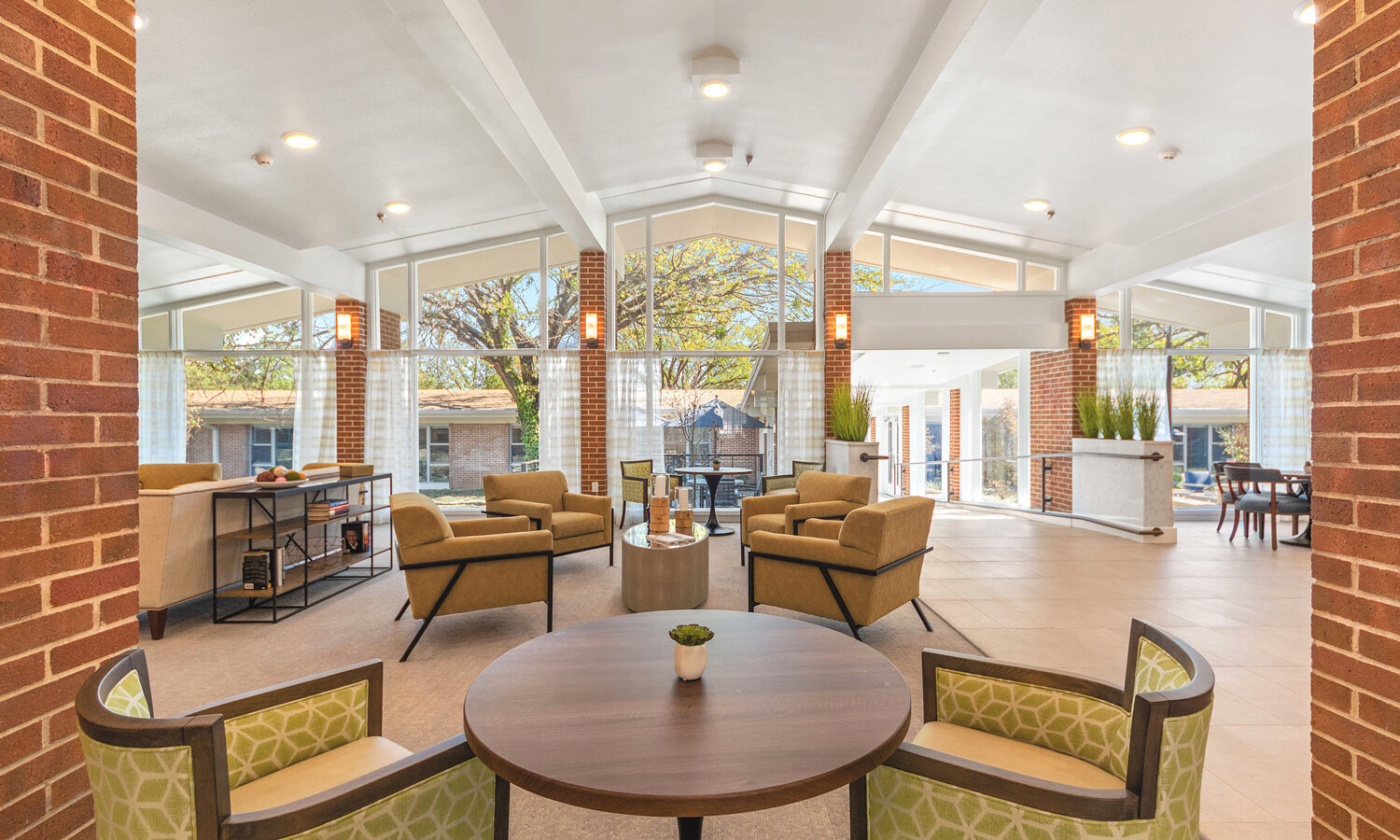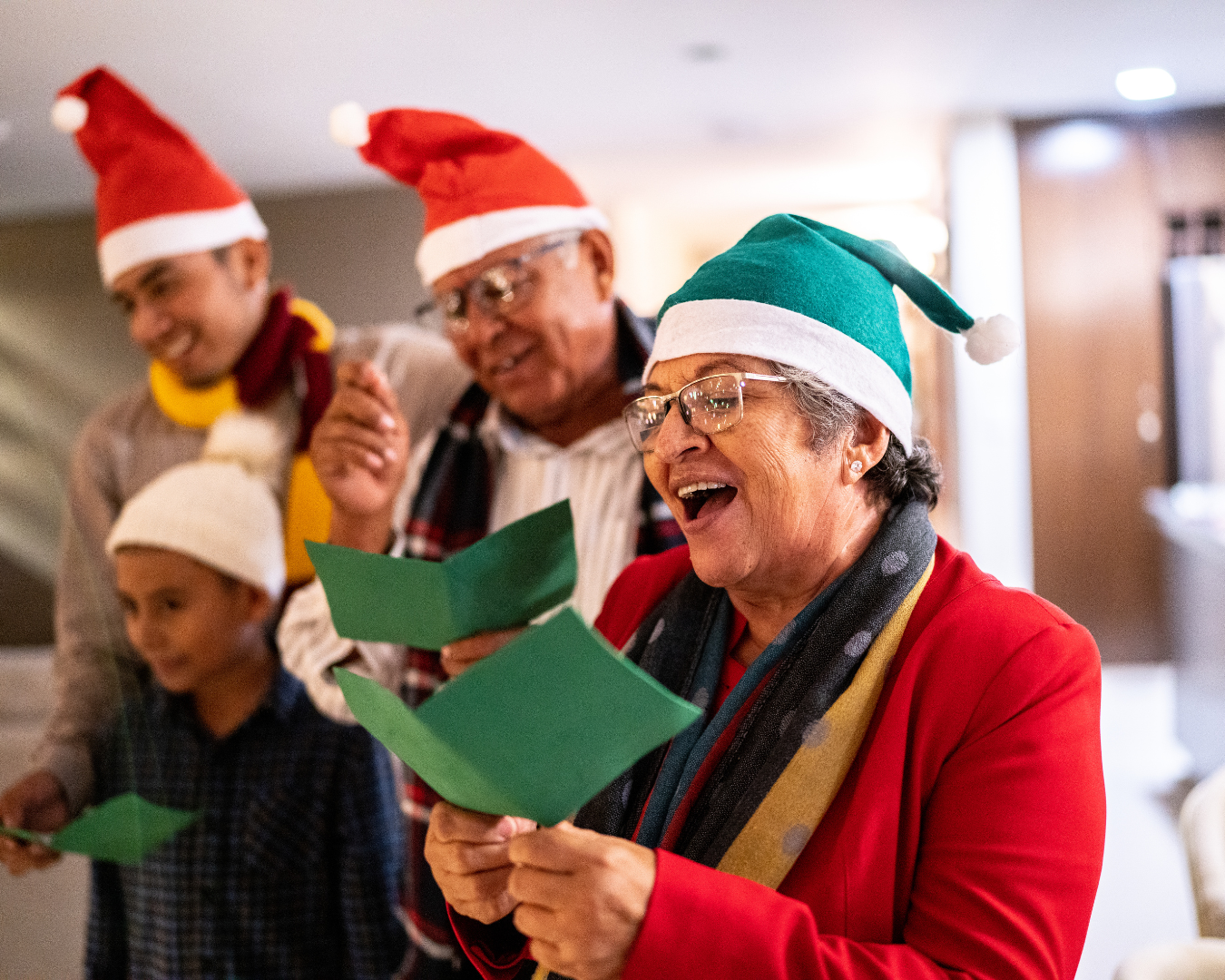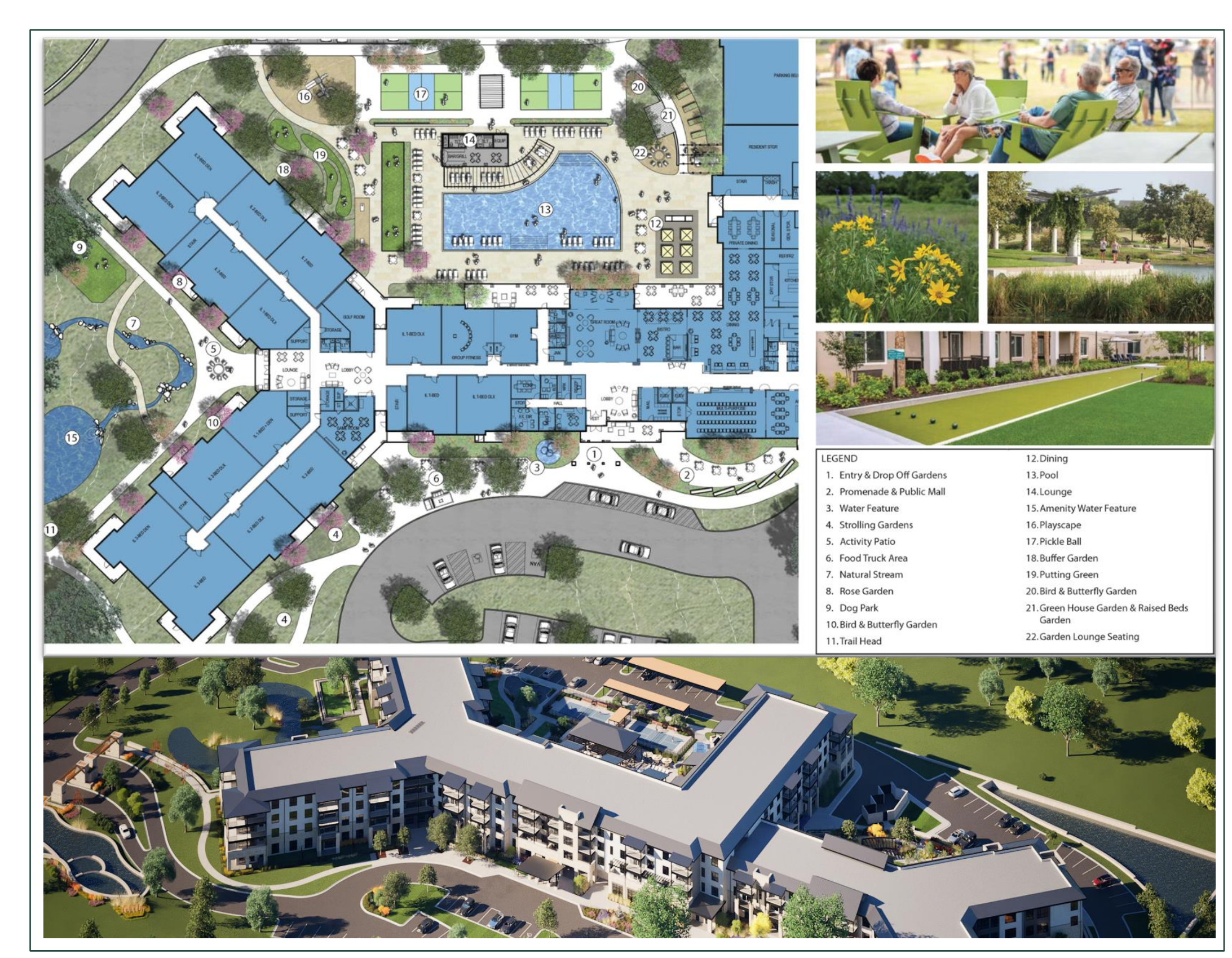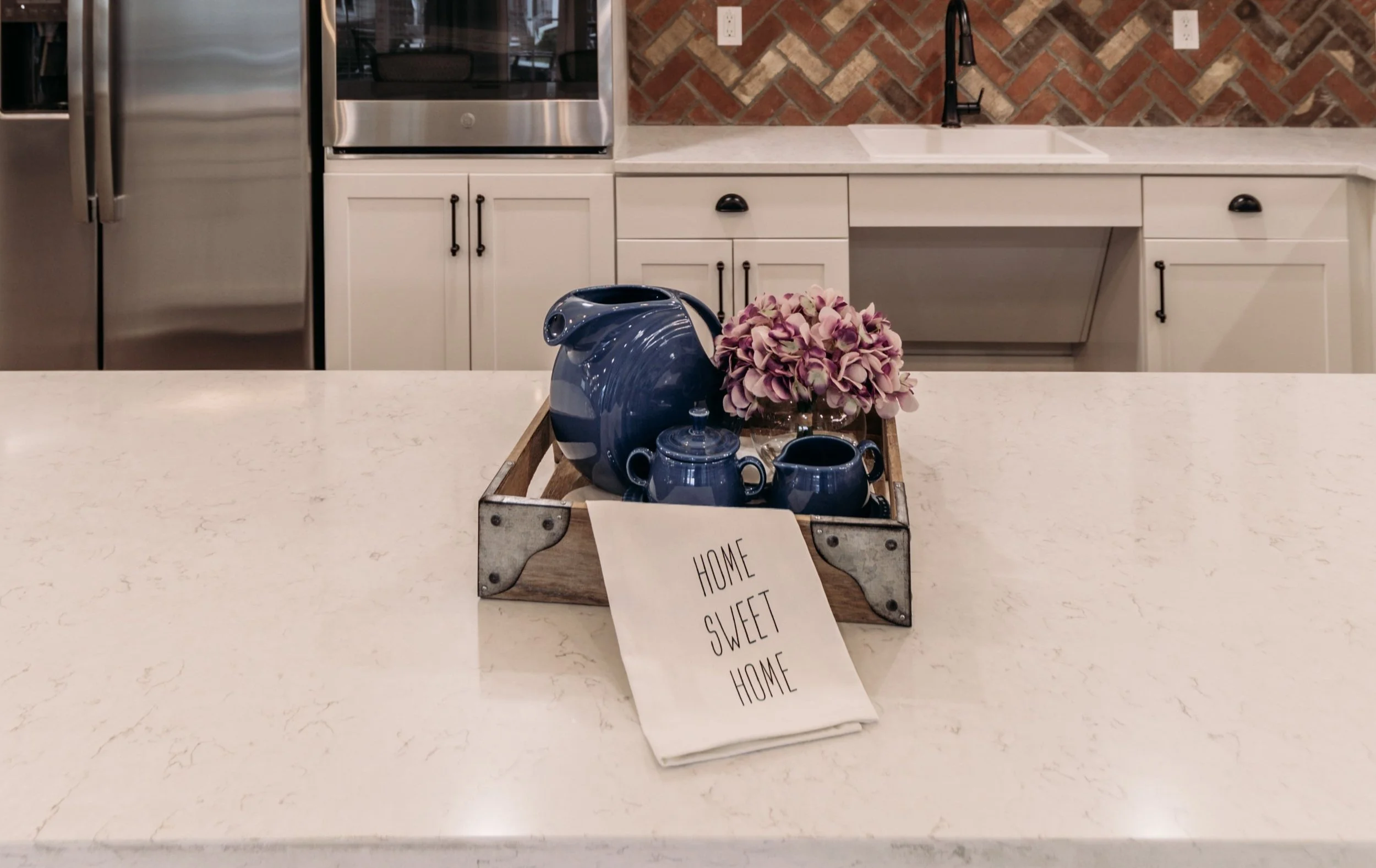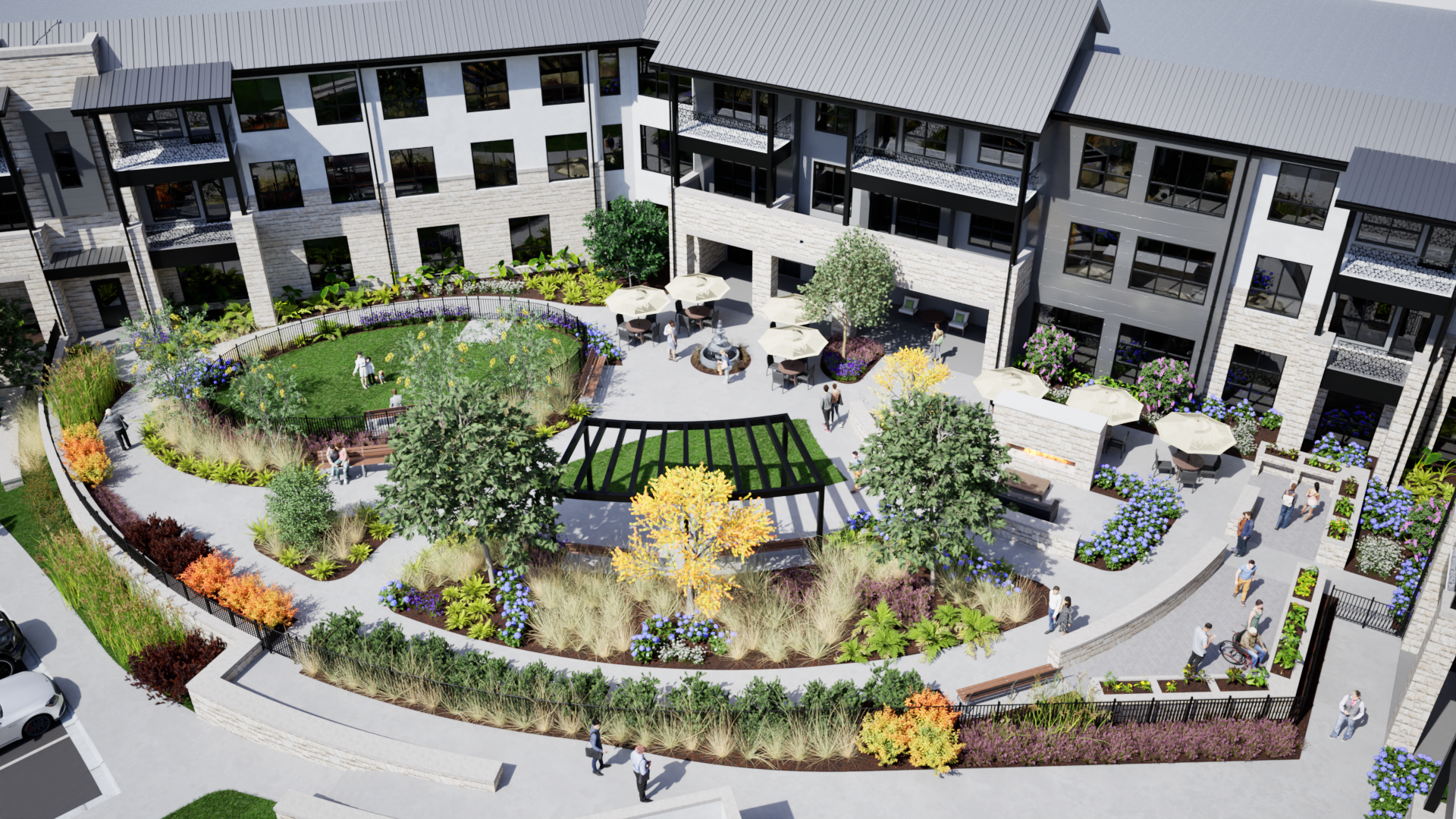The Evolution of Senior Living: More Heart, More Purpose, More Person-Centered
A senior living pioneer shares his insights on how senior living design, management, and marketing have changed over the years.
There was a time when the concept of senior living communities was unheard of. Families lived together, married children seldom moved far away, and unmarried and adult kids stayed at home. When aging parents couldn’t live alone anymore, they moved in with a family member. As times, demographics, and other dynamics in American families and communities changed, so did ideas about living into and past retirement.
Charles Shelton knows first-hand about much of this evolution. He spent many years in the long-term care and retirement housing industry, a line of work the Texas businessman says he came into “sideways” but ultimately felt it was “a ministry to which I was called.” He’s seen the industry experience a boon and owners/operators take on a greater level of business acumen, while balancing that with efforts to maximize comfort, purpose, and quality of life for residents.
Growth, Expansion, and Customer-Service
Not surprisingly, as the senior living industry has grown, it has expanded and become more varied and complex. Charles says, “When I started, we had nursing homes and independent living, with nothing in between. We were among the first to have a special unit for memory care, and that concept has become more sophisticated and much more widespread over the years.” He recalled the start of assisted living and its evolution from a strictly social model to a hybrid that includes social and medical offerings.
The one-size-fits-all concept has also gone out the window when it comes to architecture and design. As Charles says, “A house may at first thought seem to provide a greater sense of independence, but it also requires housekeeping, maintenance, and lawn care. Spacious apartments and smaller one-level cottages have increasingly gained popularity, as more seniors see the advantage of trading a big house and a yard for the freedom from the hassles of lawn care, home upkeep, and cleaning.”
The concept of downsizing, he notes, actually has become rather trendy, as people see the value of doing more with less. Flexibility is key, he says. “For instance, have some one-bedroom and two-bedroom units next to each other, so that you can expand apartments to accommodate people who want more space for family visits, etc. You don’t want to have to turn down business because you lack flexibility.”
Round Holes and Round Pegs
Charles stresses that senior living operators need to listen to potential residents and find out what they really want and how they envision their life in the community. He offers an interesting example. “Grandparents are always lovable, and kids flock to their house, partly because they have a big pool and other amenities.”
“People sometimes have a faulty expectation of what their lives will be like when they move to senior living. We need to help paint a positive and exciting but realistic picture for them.”
— Charles Shelton
When people move to a senior living community, the dynamics are different. These settings are generally not designed for larger groups of visitors. And even if there is a big Olympic-size pool, the grandkids may not feel comfortable swimming and splashing with strangers. “People sometimes have a faulty expectation of what their lives will be like when they move to senior living. We need to help paint a positive and exciting but realistic picture for them,” Charles says.
A Diverse Direction
As senior living communities became more diverse, Charles notes, “Marketing has become more sophisticated.” He stresses, “It’s not one-size-fits-all. When we were doing pre-marketing for one of our communities, we tried TV and newspaper, which had worked in other markets, but direct mail was much more effective here. When we combined that with a dinner meeting, that was even more effective.”
Today, he observes, marketing is much more complex, with the advent of social media, online reviews and rating systems, blogs, virtual tours and videos, email and text blasts, and much, much more. Nonetheless, Charles notes that word of mouth remains tried and true, and it is always important to tap into your most satisfied residents and families for leads, reviews, and efforts to create and maintain a positive buzz.
The Power of Life-Long Learning
Part of the reason Charles has loved his time in the industry so much is that he’s never stopped learning and embracing change and new ideas. He urges developers, owners, and operators to get to know seniors in their markets. “Sit down with them, do focus groups, and find out what their needs, desires, and expectations are,” he says. While there is a value to marketing studies and research, there is no substitute for these real-world conversations and taking an opportunity to get to know the people who—hopefully—will be living in your community.
There is lots of talk about the challenges of appealing to a baby boomer market. However, Charles says, “I don’t see boomers as a different clientele. We should be encouraging them to think about senior living now and not wait until they have a health event. We need to stress that they can continue to live an active life, enjoy their favorite activities and social events, and even keep working.”
Designing communities for active seniors is a great passion of the team at Pi. For instance, our design concept for North Star Georgetown in Texas emulates a Historic Downtown Georgetown aesthetic. Residents and guests are welcomed into a two-story great room and clubhouse. The clubhouse design encourages a holistic wellness-centered lifestyle. Clubhouse amenities include an exercise room, yoga studio, community kitchen, dining, and theater/lounge. On the second floor, a craft studio and game room open to overlook the first-floor clubhouse amenities. The plaza overlooks a courtyard pool deck and outdoor dining. Outdoor activities such as horseshoes/bocce ball at the game court and golf on the putting green all encourage spontaneous gatherings. This is the perfect setting for active seniors, including boomers who have no interest in slowing down.
Let us help you combine tradition with hot trends for a community residents will love. Contact us here or call us at 512-231-1910.
(1) Foster, Richard. [Fairhaven Retirement Home], photograph, Date Unknown; (https://texashistory.unt.edu/ark:/67531/metapth39082/m1/1/: accessed January 14, 2021), University of North Texas Libraries, The Portal to Texas History, https://texashistory.unt.edu; crediting Denton Public Library.


